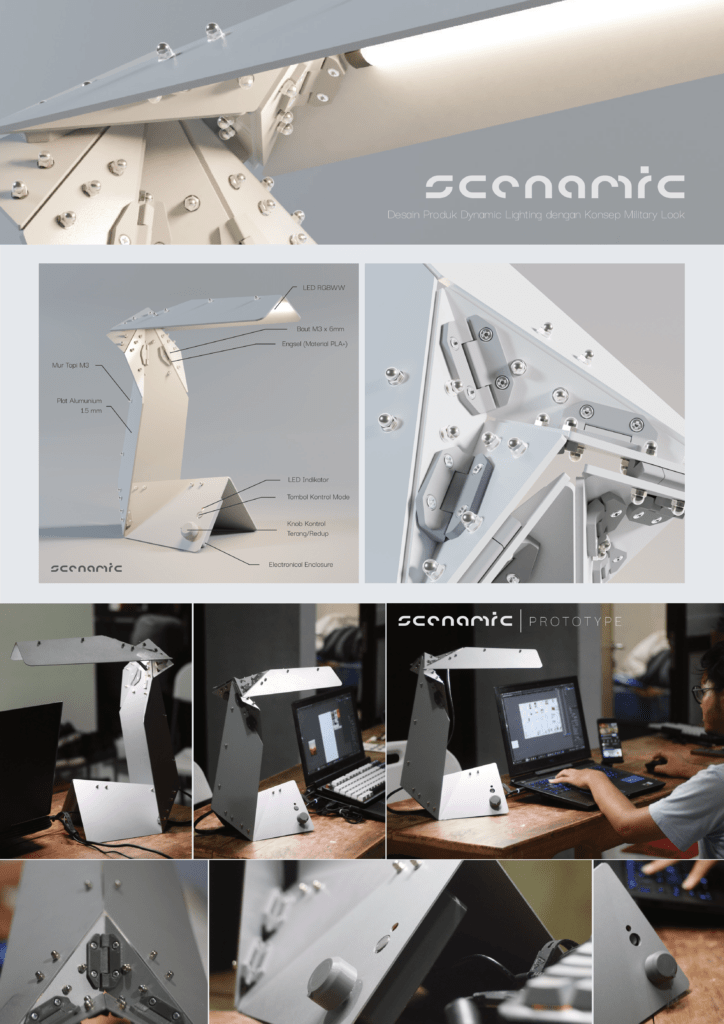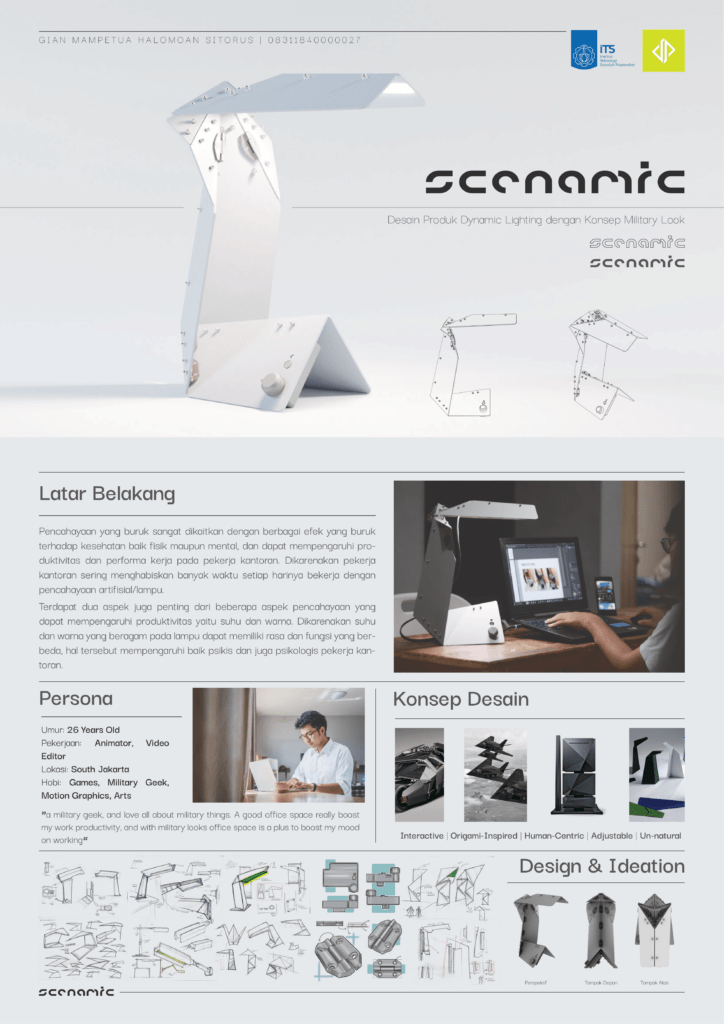Some of the office workers who returned to the office thought that working in an office environment had many positive impacts, such as feeling less alone, more focused, and feeling connected to others. Not a few office workers experience negative impacts such as pressure from too much work, fatigue, or on the mental health of workers/employees. There is a lighting factor that affects the psychology of office workers while working in the office.
These factors are the direction of lighting, brightness, color, and saturation. Seeing this opportunity, the development of lighting products based on the psychological impact that lighting has on office workers has the potential to be a solution. The method used in this study uses the existing product comparison method, in-depth interviews with office workers and experts in lighting, persona analysis, activity, form requirements, origami folding experiments applied to lamp shapes, ideation, design alternatives to user testing. The author designs lamps using dynamic lighting scenario technology that can adjust lighting according to the user according to dynamic lighting scenarios based on working hours in the case study. The author adds a design that uses an origami folding mechanism to increase user interest in the product and provide a positive psychological impact on office workers while working.


